
 |
|
|||||||
| Performance Modifications and Other Conversations This is a place where we can have real, honest discussions about all things performance related. Whether it's power adders, engine parts, configurations, injectors, tuning, or whatever else you can thing of, let's talk about it! |
|
|
Thread Tools | Display Modes |
|
#1
|
||||
|
||||
|
As they say... "Let's start from the beginning." This is something I've wanted to do for a while. Sort of a digital memoir, if you will. Hell, maybe I'll even write a book about it. I doubt it would sell, but it's interesting to keep a record of things so my kids and grandkids can say, "See? He wasn't an abject failure." It's sad, really, that I know so little about my grandparents and only just a bit more about my parents. Maybe we could revive the art of storytelling so that we don't lose ourselves to the sands of time. So let's begin.
Power Hungry Performance - A History of Tuning Part 1 - Getting Into the Industry (or, Why I Cut My Hair to Work for Superchips) It's 1997. I'm living in Orlando. I'm tired of breaking my back bent over an engine compartment changing spark plugs. I'm looking for a job that will be not only financially stable, but also challenging. I've looked into different computer-based markets, but I'm not very experienced with PC. I mean, I really understand programming and have experience with reverse engineering, but all I've done professionally on the PC is some FoxPRO RDBMS stuff and some light networking using LANTastic. Yeah, this nasty a$$ COAX network stuff! 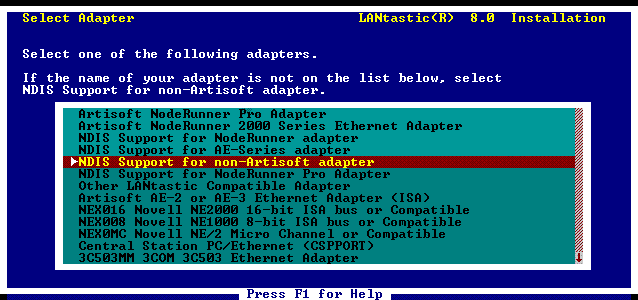 Anyway, I come across an ad in the paper for someone with "strong automotive knowledge as well as a solid computer background." Damn! Sign me up. I schedule an interview, and then head down to this little building on some side road in Longwood, FL. The sign says "Superchips". Never heard of them, but this was about to get interesting. I'm familiar with Hypertach at this point, but didn't know who Superchips was or what they did. I head in and meet with Mike Short, the Manager of the company. He's an interesting guy. Easy to to talk to, in a way that many managers are not. The kind of guy you'd probably watch a ball game and have a beer with. We chat for a bit with him explaining what Superchips is, what they do, and what they would expect from me. Following this conversation, he introduces me to Craig Ancel, one of the engineers at the company who is going to give me a "test", just to see if I know my a$$ from my elbow. He's also very nice and is easy to talk to, although I'd say he's a little more on the geek side of things. The test goes like this: Craig: Are you familiar with Hexadecimal? Me: Yes. Craig: Okay. We're going to open up a calibration and I need you to see if you can identify any patterns or maps in the data. Me: Okay, no problem. At this point, we open up an A9L calibration from a 1988 Ford Mustang. Anyone who has ever done tuning for Ford back in the '90s should be intimately familiar with this one. I've included a few screenshots of what I was looking at. For most folks, this wouldn't make much sense but I was completely comfortable with this. Sample Screenshot of A9L Mustang Calibration (Click to Enlarge): 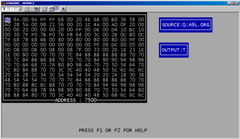 Among the jumbled up values, you can see a certain pattern unfolding in the middle of the screen at the 8th row. Setting the base address at this point and then resizing the map yields us the first spark (timing) table. This map is 10 data points wide and 8 data points high (10 x 8). A9L Timing Table 1 (Click to Enlarge): 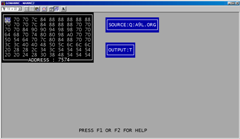 There is another spark map immediately following the first one. This one is for higher altitude adjustments. A9L Timing Table 2 (Click to Enlarge): 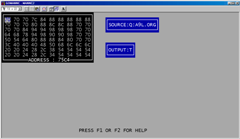 And finally, a third spark map with this one being a little different. This is what Ford called a "Mean Best Timing" spark map and was often utilized as a sort of maximum limit for timing advance. A9L Timing Table 3 (Click to Enlarge): 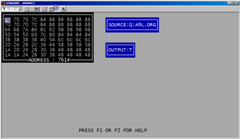 Moving further down the list, we started looking for fuel tables. These are a stoichiometric type value calculated against an optional Air-Fuel Ratio (AFR) of 14.64 to 1. As load increases, the AFR drops to help improve power output while under light load conditions, the AFR increased to help improve fuel economy. Sample Screenshot of A9L Mustang Calibration Showing Fuel Table (Click to Enlarge): 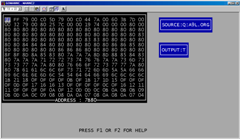 A9L Fuel Table 1 (Click to Enlarge): 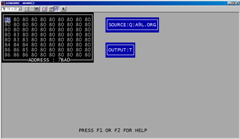 A9L Fuel Table 2 (Click to Enlarge): 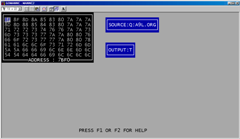 A9L Startup Fuel Adder Table (Click to Enlarge):  As you can see, these are just a small sample of what I was asked to look for. After a few minutes of getting my head around the concepts, I was able to find these and several other maps and functions without any difficulty. Sufficiently satisfied with my capabilities and understanding of what I was looking at, the conversation went like this: Craig: Wow! We've had several people come in for an interview and you're the first one who actually gets this. Me:  Anyway, the rest of the interview progressed smoothly. Superchips was confident in my abilities and I was subsequently hired on as a calibration engineer. The only caveat was that I was asked to cut my hair. As Mike Short put it, "We like you and think you'll be a good fit. Just one thing... How do you feel about your hair?" I knew exactly what he was going for and I immediately replied, "If it gets me a job, I'll cut it off tonight!" and did exactly that. Once hired, it was my responsibility over the next several years to continue calibration development and write custom tuning for our dealers as well as larger companies like Steeda, Vortech, Paxton. You wouldn't believe it, but we actually distributed files using our very own BBS system, which I had the "pleasure" of administrating.  Regular activities involved helping to reverse engineer many of the vehicle platforms including the Mustang, Focus, T-Bird, Crown Vic, F-Series Gas, and especially the F-Series Power Stroke. I also worked on some GM stuff at the time, writing tunes for the C/K Series trucks as well as the LT1 and early LS1 platforms found in the Camaro and Corvette. I assisted in the development and implementation of many of the tuning standards still in use by many aftermarket Ford tuners today. Being heavily involved in the development of calibrations for the Ford Power Stroke, I wrote most of the very first tunes to ever hit the street, many of which are still out there in trucks. It still surprised me to see my Copyright footer in files that have been read from chips and PCMs, some of which have been programmed quite recently. As time progressed, I also began writing software, moving our DOS based utilities to Windows applications. Regular activities involved helping to reverse engineer many of the vehicle platforms including the Mustang, Focus, T-Bird, Crown Vic, F-Series Gas, and especially the F-Series Power Stroke. I also worked on some GM stuff at the time, writing tunes for the C/K Series trucks as well as the LT1 and early LS1 platforms found in the Camaro and Corvette. I assisted in the development and implementation of many of the tuning standards still in use by many aftermarket Ford tuners today. Being heavily involved in the development of calibrations for the Ford Power Stroke, I wrote most of the very first tunes to ever hit the street, many of which are still out there in trucks. It still surprised me to see my Copyright footer in files that have been read from chips and PCMs, some of which have been programmed quite recently. As time progressed, I also began writing software, moving our DOS based utilities to Windows applications.Over the many years I have been in this industry, I have utilized every possible source and avenue of information that I could. Countless hours spent scouring the internet, reading... downloading... archiving... cataloging. It is through these efforts that I have developed an understanding of the Ford EEC-IV and EEC-V Processors that I would say rivals the knowledge of the actual Ford Powertrain Development teams. I've stood on the shoulders of giants, as they say. It's an interesting (albeit challenging) field working in Reverse Engineering because you not only have to eventually make something that works, but you have to do it almost blindfolded and handcuffed by tearing something apart and then trying to understand why it was put together the way it was. I was (and still am) grateful for any and all help I've received over the years, whether it be little secret tidbits of info that helped provide further insight into the inner workings of the factory calibrations and hardware, or just working with people within the motorsports industry who provided me with opportunities to further my knowledge. This has been a fantastic industry to be a part of, and while I've seen far too many businesses come and go, I've enjoyed the friendships I've made and seeing quality companies that have stood the test of time and are still here with us. Over time, I've had access to a number of different tools. In the beginning, some where downright archaic and cumbersome. However, as time went by, the tools (both hardware and software) would continue to improve along with our understanding of how these systems worked. This all helped to provide enhanced performance, greater reliability, and improved customer satisfaction. It's fascinating to see where things are at now compared to what was available when I started. For example, if you really want to see a dinosaur, this is my personal laptop that I've had for just over 20 years that I've used for tuning and development. Toshiba Laptop (Click to Enlarge): 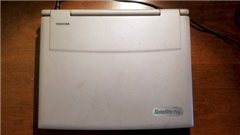 Toshiba Laptop... STILL running with MAP6 Editor open! (Click to Enlarge): 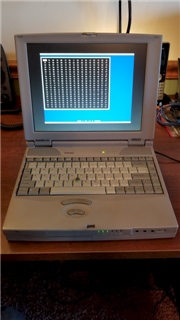 Combined with a Memory Emulator, these made for an EXTREMELY powerful tool. RACELOGIC and Romulator Memory Emulators (Click to Enlarge):  The Racelogic emulator in the above picture allowed us to not only live tune a vehicle (making changes while the vehicle was running), but also included and active ROM-Watch which allowed us to see *in real time* exactly what memory the PCM was accessing at any given moment. Using this, we were able to locate which maps, functions, and parameters were being accessed as well as under which conditions (cold, warm, light load, heavy load, startup, etc.) they were being accessed. You could actually watch the markers move through a map or function as you accelerated or decelerated, and this was exceptionally important to creating an understanding of how the PCM functioned. In 1997, these were the tools of the trade and they were EXPENSIVE. The RACELOGIC emulator was going for about $2500 at the time (if I remember correctly) and laptops were still regularly over $1000. The PCM adapters for the emulators were just modified chips, but unless you worked in the industry, you were very hard pressed to come by one as all the chips of that era were potted in resin and you had to nearly destroy them to uncover the circuit boards. Still, it was possible for someone outside the industry to build this type of setup if they were really serious about tuning. Having worked for Superchips, all this stuff was readily at hand so if something died, we'd just make more.  Nowadays, laptops are 1/3 the price and 20 times more powerful. What we used to do in DOS (no multitasking here, folks) we now do in Windows. Networking is wireless. I even remember the first time I had a drive that broke the 1 GB barrier. There is now an almost endless supply of development tools at our disposal. Our "server", which at one time was nothing more that a Pentium II - 233 with a 4 GB Hard Drive running Windows NT SBS, has evolved into a massive, 20 TB rack mount sever that lives in its own climate controlled room along with redundant Linux servers to not only handle our development data, but to also handle file distribution and many other services. Power Hungry Servers (Click to Enlarge):  Anyway, this is just the first step along an incredible journey in which I have been so fortunate to have been a part of. I hope you have found this to be interesting and informative. In upcoming posts, I will be writing more about my time at Superchips, the years where I started and ran Diesel Power, the years I spent working for Edge, and then ultimately forming Power Hungry Performance and reinventing the best selling Power Stroke chip on the market, the Hydra! And if you have any questions, please feel free to ask. Until next time... Keep the shiny side up.
__________________
Bill Cohron - The Mad Doctor    Power Hungry Performance - The ORIGINAL in Ford performance tuning... Since 1997! (678) 890-1110 www.gopowerhungry.com - Home of the Hydra Chip, Minotaur Tuning Software, and the new Orion Reflash System for Navistar! Bring back  Windows™ XP and 7. Windows™ XP and 7.   Windows™ Vista and Windows™ Vista and  Windows™ 8 is a pain in my a$$! Windows™ 8 is a pain in my a$$!   Windows™ 10 is only slightly less annoying! Windows™ 10 is only slightly less annoying!   Windows™ 11 is garbage! Windows™ 11 is garbage!  Much to my surprise, I'm actually quite enjoying Linux! 
|
| Tags |
| calibration, diesel, dyno, eec-iv, eec-v, emulator, ford, hungry, mustang, performance, power, powerstroke, racelogic, romulator, superchips, tuning |
|
|